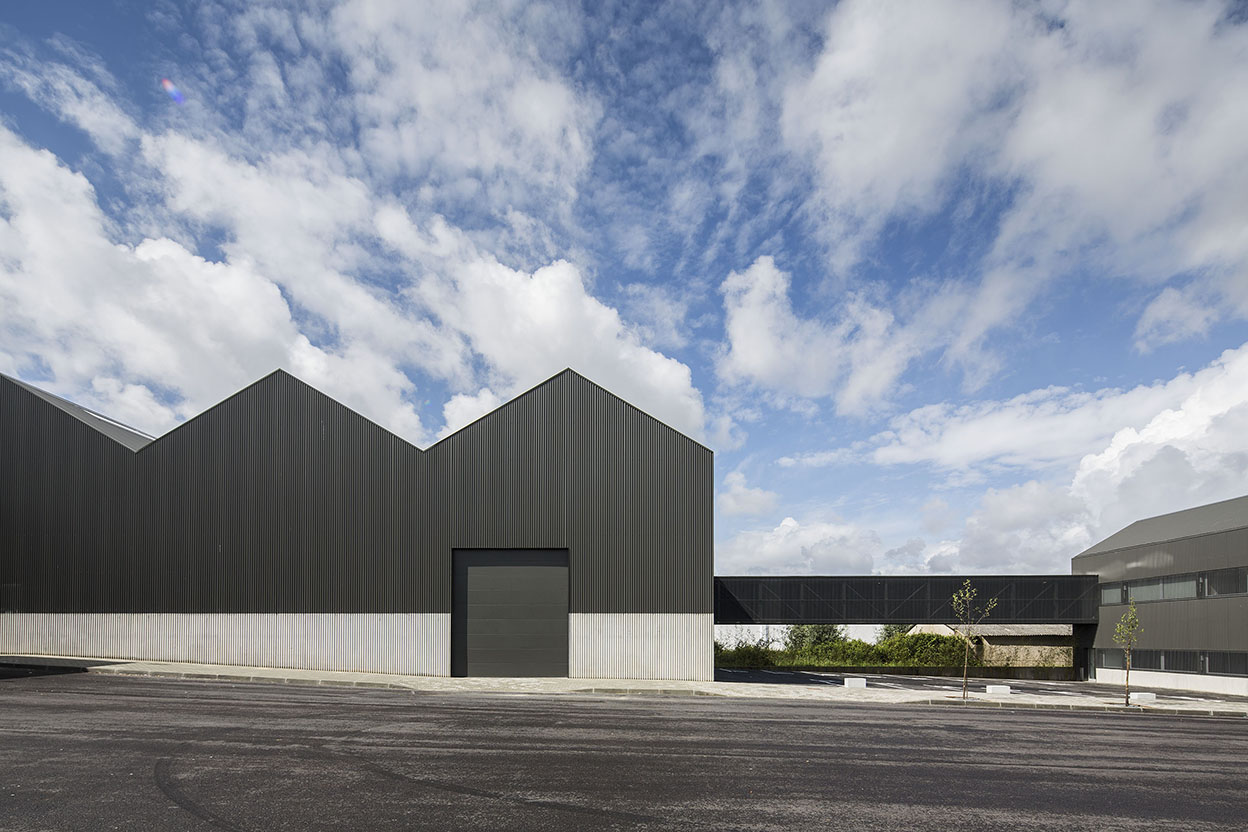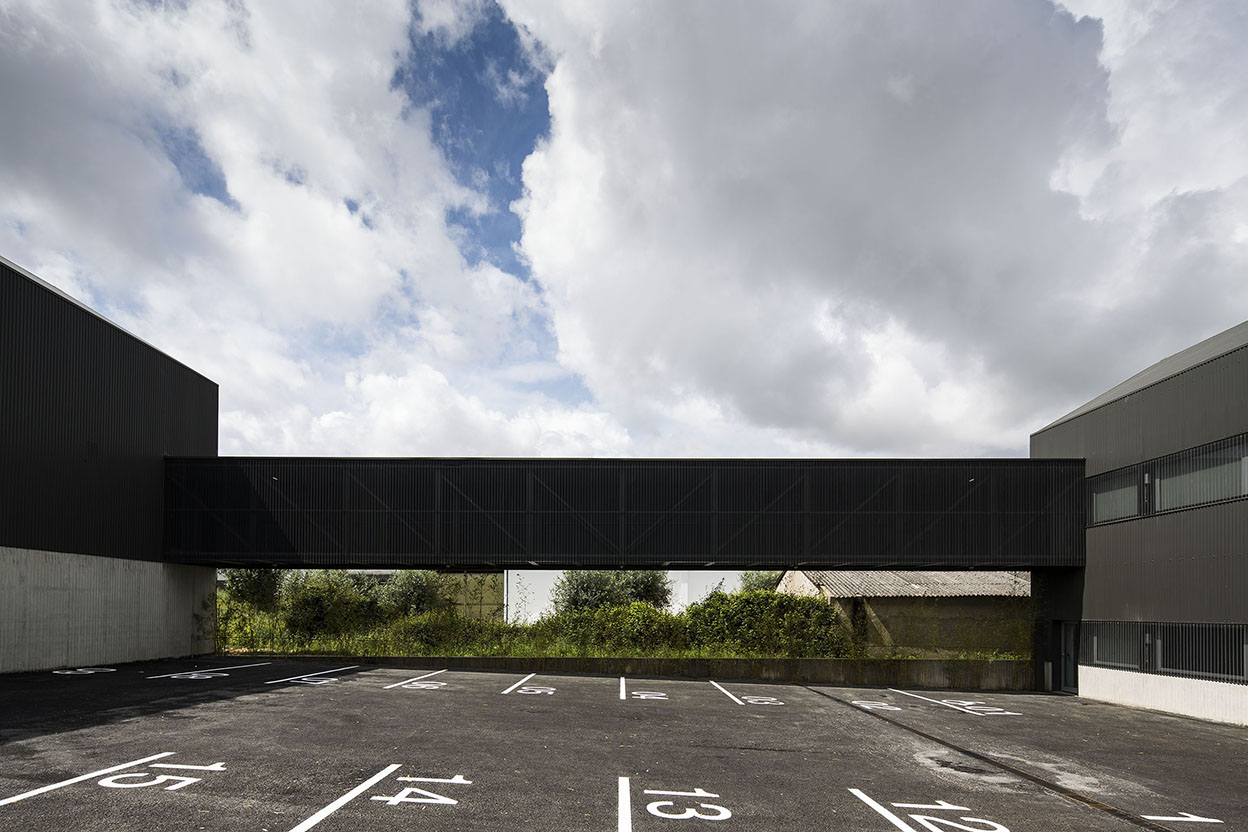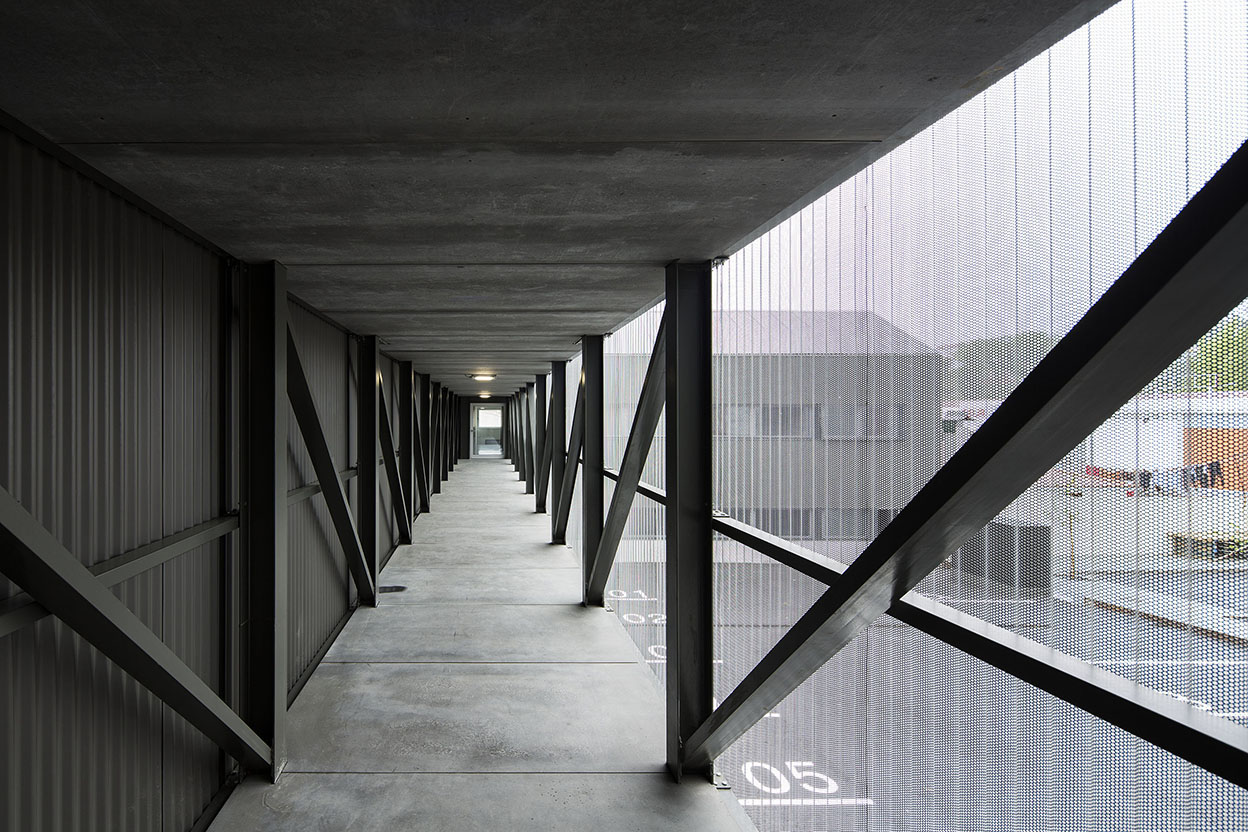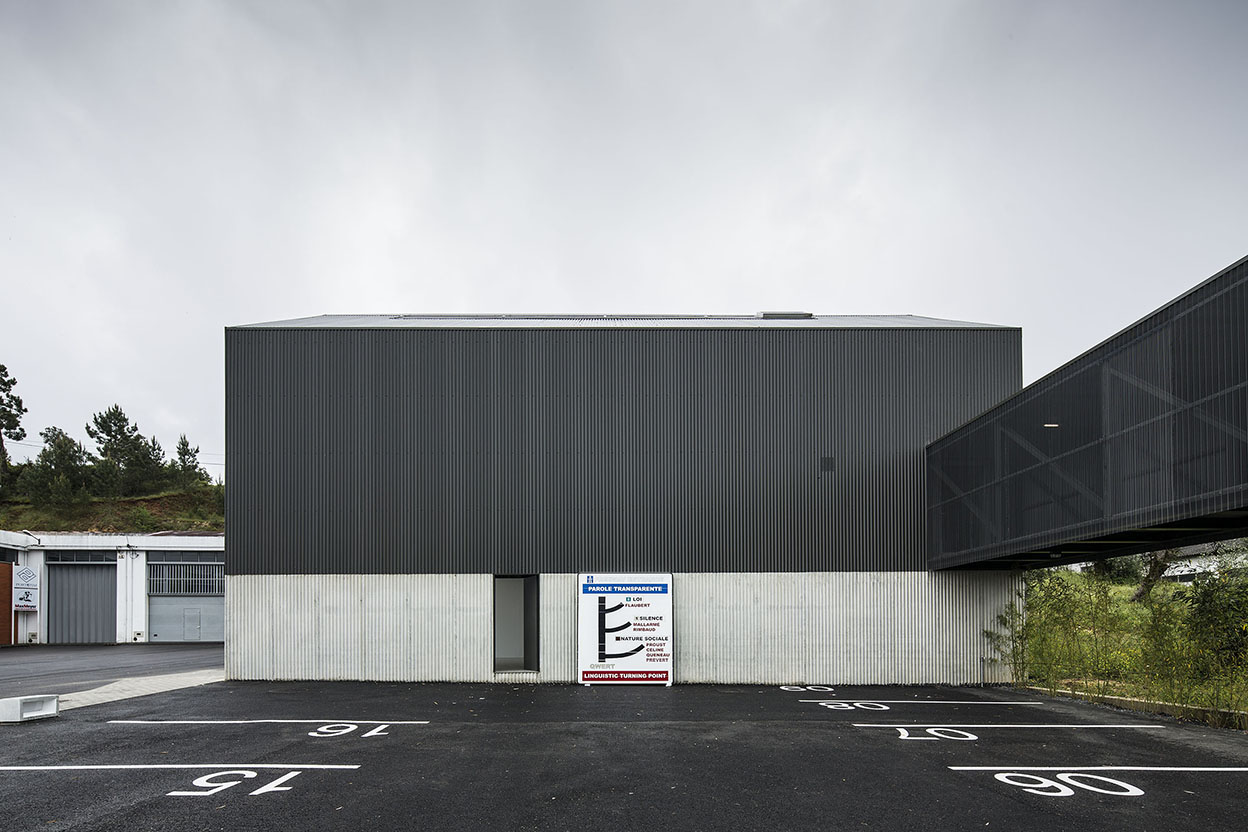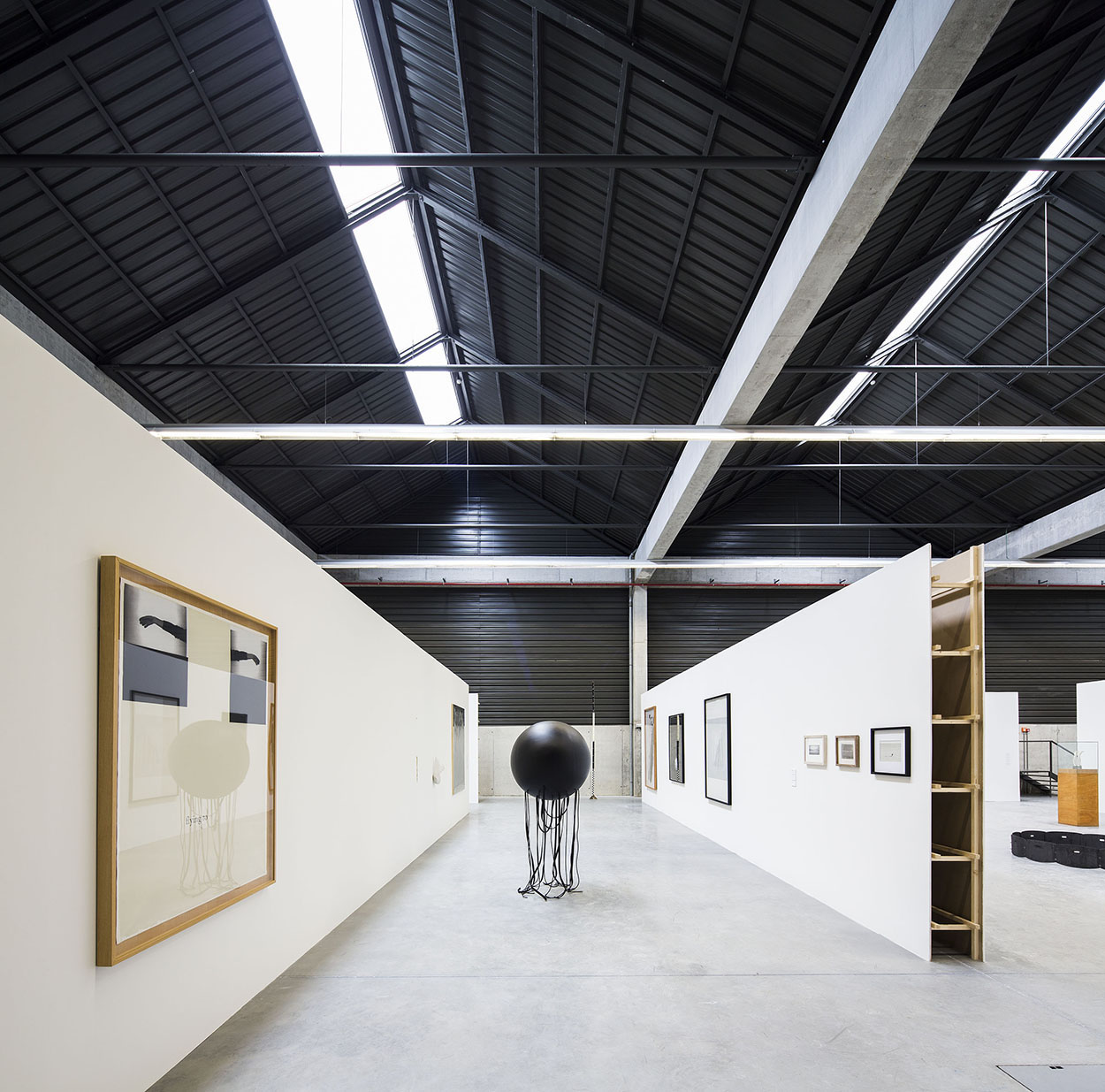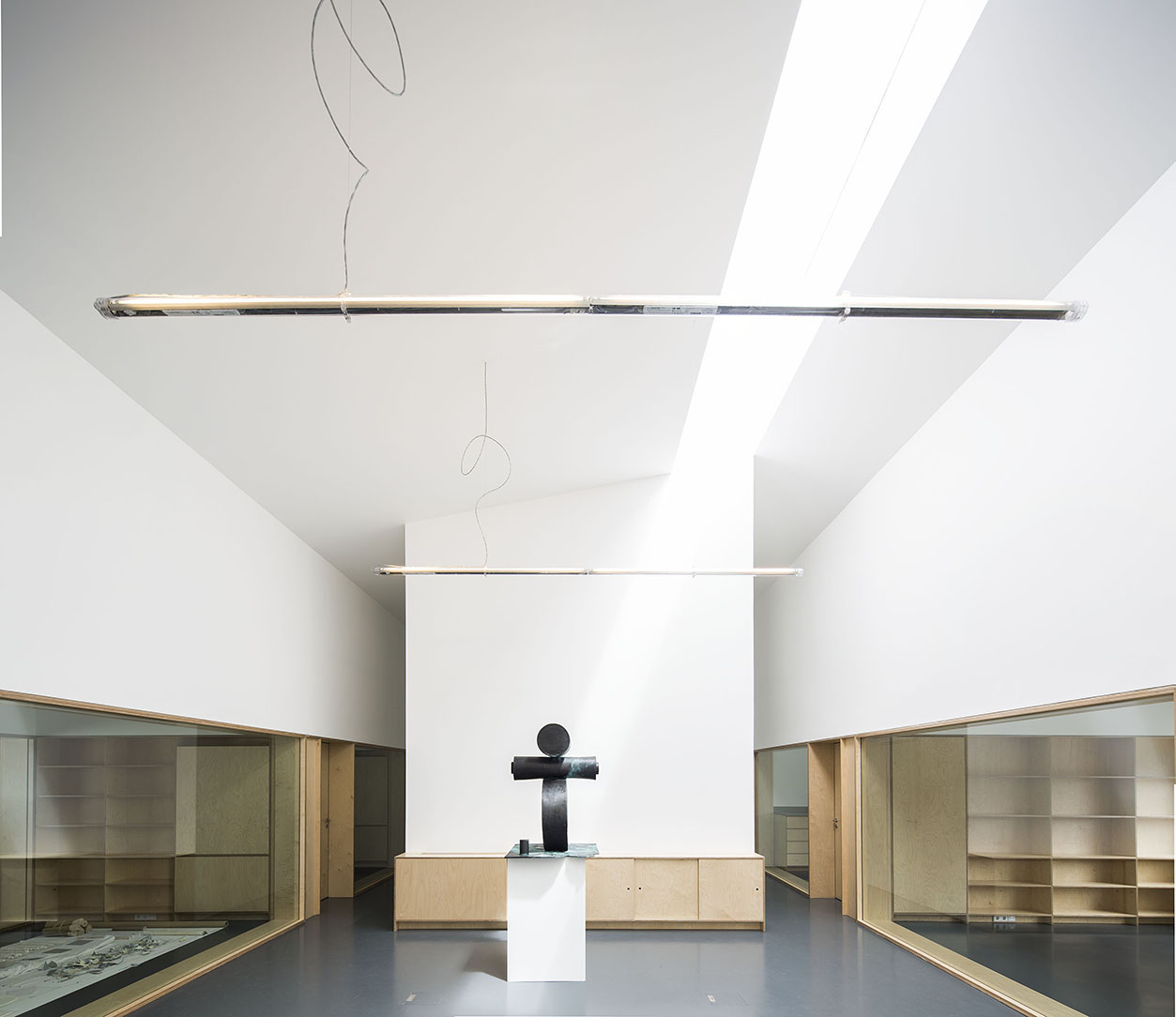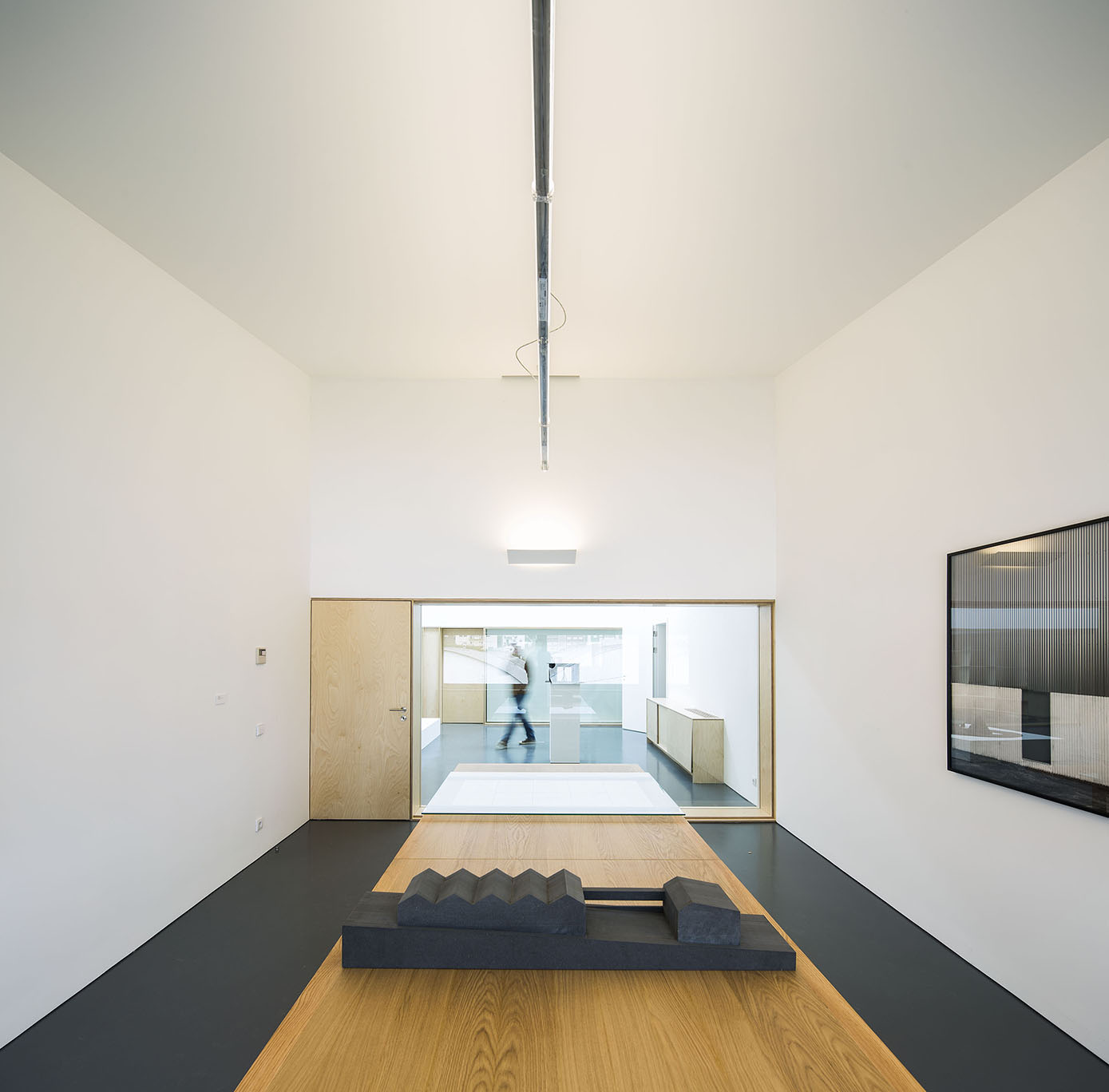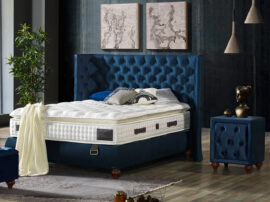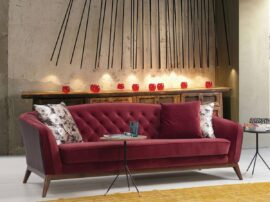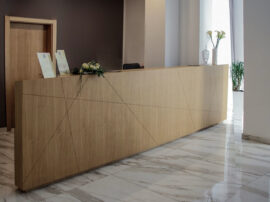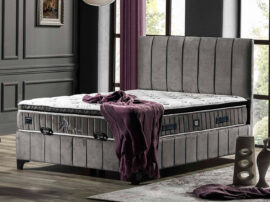Located in Coimbra’s industrial area, the Adémia office building and storage warehouse is made of two volumes combining warehouse space, office facilities and a commercial area. The smaller two storey building is located at the limit of the site and faces the main street. The commercial space is set at the entrance level with offices located on the first floor. A larger and longer one storey building (the warehouse) is located at the centre of the site and it is formed by a combination of five equally sized units with pitched roofs. The combination of the two volumes occupies the entire length of the plot. A flat-roofed passage on the first floor connects the two buildings, creating a view over the courtyard at street level, which is used as meeting space and a parking area.
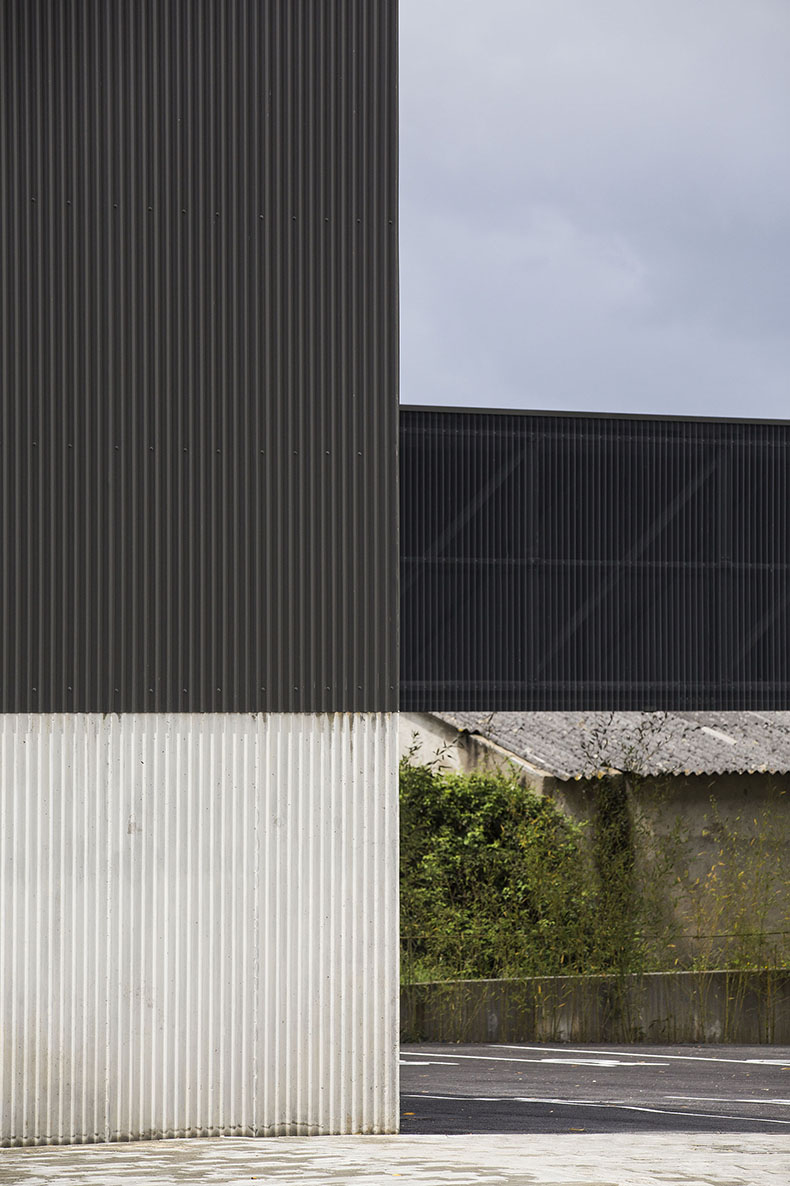
A cast in-situ concrete wall emerges from the foundations level to meet this horizontal line. The casting frame has the same shape as the
corrugated steel panels above it, creating a continuous pattern from the top to the bottom of the walls. Above the horizontal line, the entire façade surface is clad with corrugated steel places, including at points where there are openings. In the office building, where windows must allow opening for ventilation purposes, a similar system for cladding was used integrating micro-perforated corrugated steel screens. This solution was also applied in one of the façades of the elevated passage between the buildings, which gives it a sense of transparency. Ultimately, the consistent use of these two materials throughout the
project, and the inventive ways in which they are combined together, creates a unique identity for both buildings to act as a whole.
Project
year: 2010
to 2012
Construction
year:
2012 to 2015
Client:
António Albertino dos Santos
Location:
Ribeira de Eiras, Adémia, Coimbra
Architecture
Author:
João Mendes Ribeiro
Co-author:
Catarina
Fortuna, Joana Brandão
Collaboration
during project phase:
Ana Maria Feijão, Ana Margarida Tavares, Inês Lourenço, Joana
Canas Marques
Collaboration
during construction phase: Filipe
Catarino
Coordination
during construction phase:
Catarina
Fortuna, Joana Brandão
Engineering
Structural
Engineer: Paulo
Maranha Tiago
Hydraulic
Engineer: Vítor
Ribeiro
Electrical
Engineer:
Luís Ribeiro
Mechanical
Engineer: Pedro
Dias
Security
Measures and Fire Consulting:
Paulo
Sampaio (ECA Projectos)
Acoustic
consulting:
Celsa Vieira (ECA Projectos)
Thermal
consulting:
Diogo Mateus (ECA Projectos)
Landscape
Architecture: João
Mendes Ribeiro
Supervising:
Jorge
Teixeira Dias
Contractor:
Ramos Catarino 2
Photography:
André
Cepeda, Nelson
Garrido / ngphoto.com.pt
